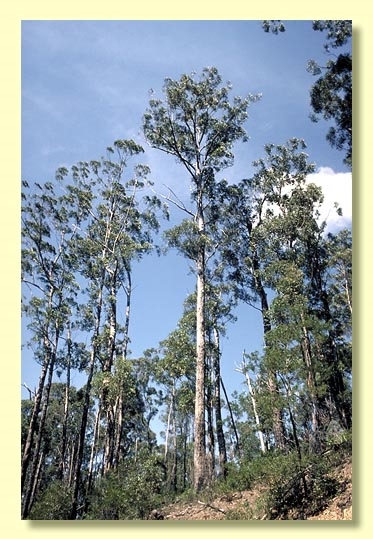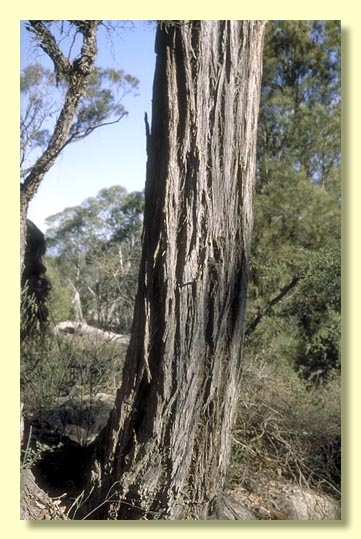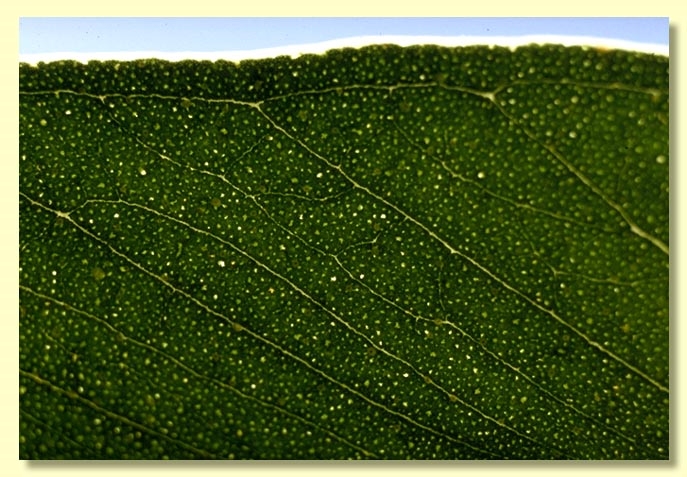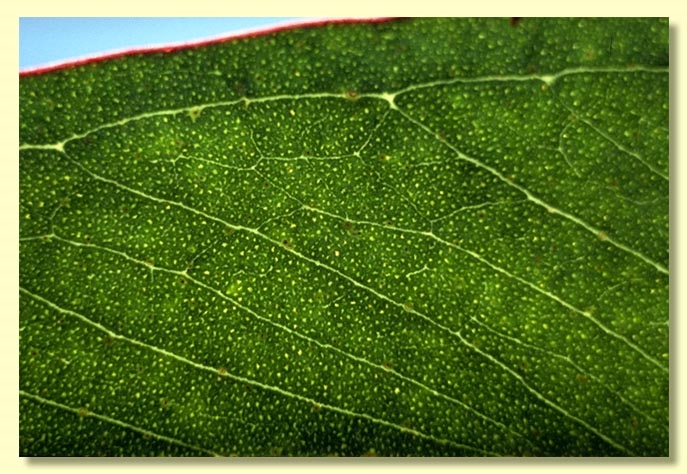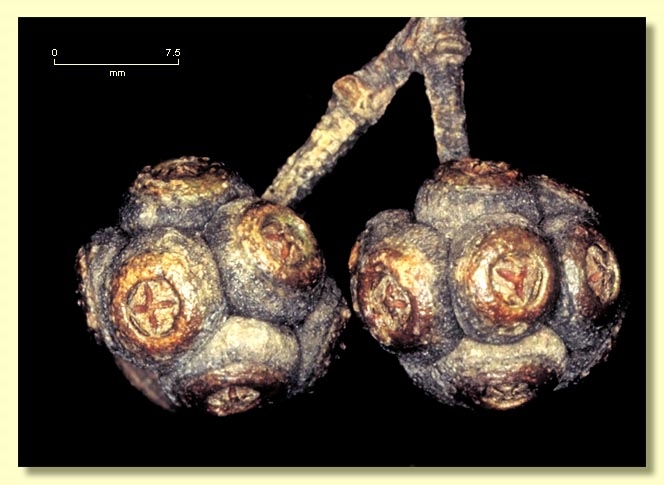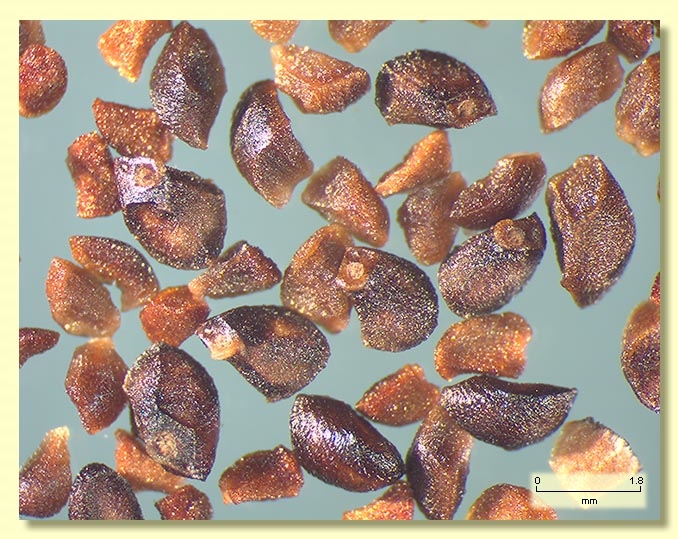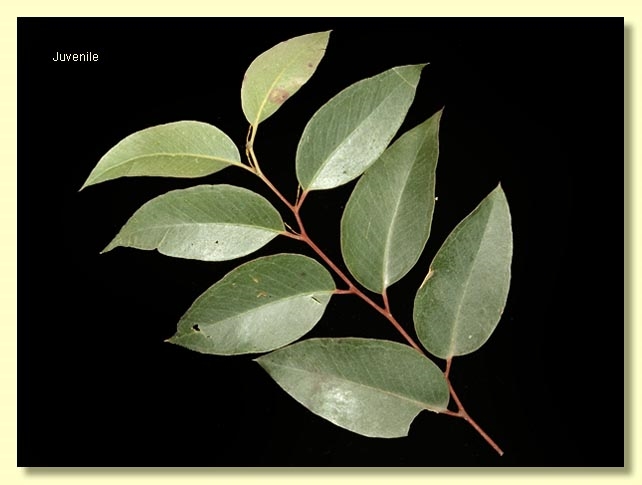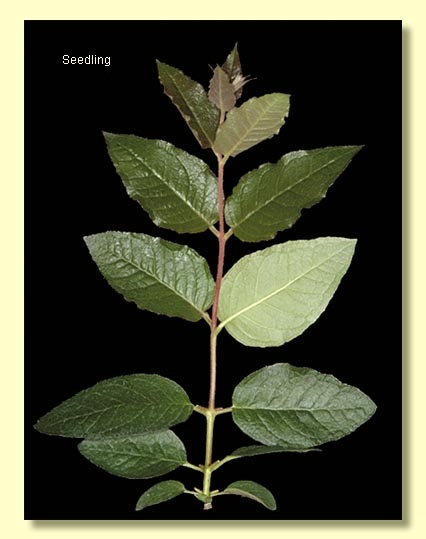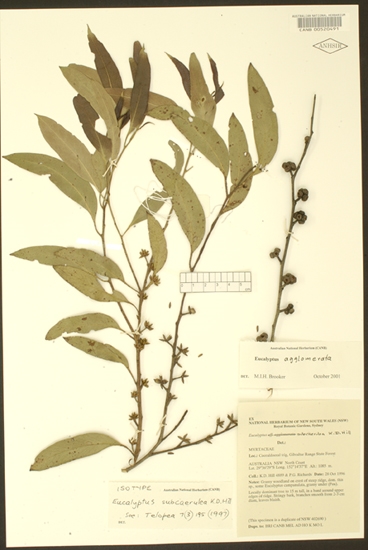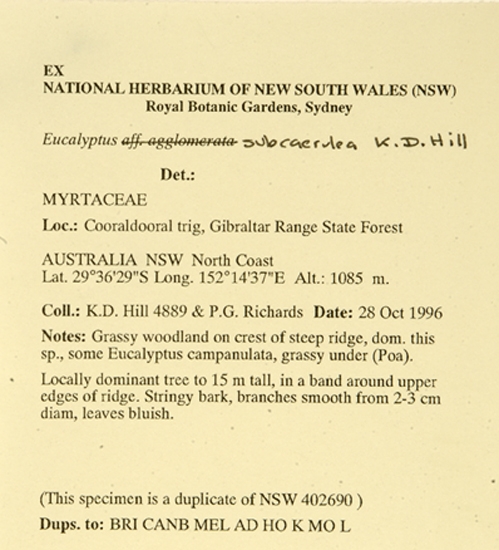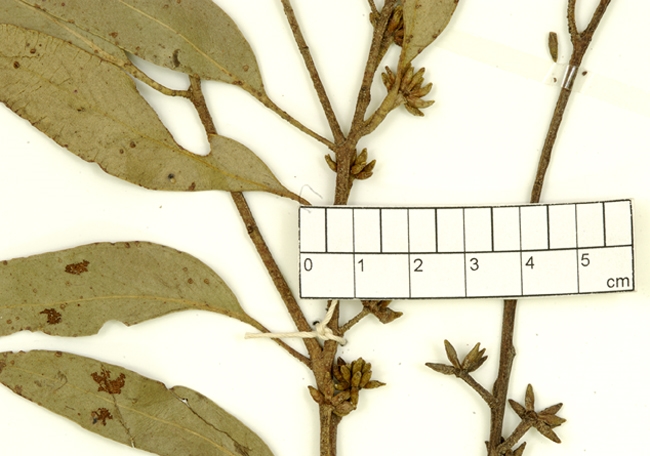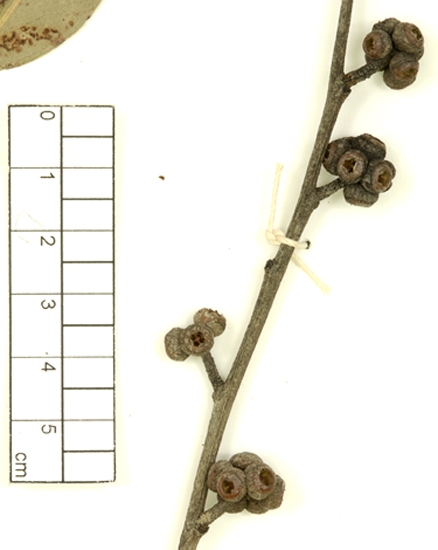Euclid - Online edition
Eucalyptus agglomerata
Eucalyptus | Eucalyptus | Capillulus | Pachyphloius
T: Hill Top, NSW, Jan. 1896, J.H.Maiden s.n.; holo: NSW.
Bark rough to small branches, stringy or fibrous, dark grey or grey-brown.
Juvenile growth (coppice or field seedlings to 50 cm): stem rounded in cross-section, scabrid at first, becoming smooth; juvenile leaves petiolate, opposite, conspicuously undulate and discolorous for 3 to 6 pairs, initially scabrid-hairy above and below but soon smooth above and scabrid only on margins and midrib, becoming glabrous, alternate, ovate, 3.5–10 cm long, 2–5.5 cm wide, margin entire, glossy, green.
Crown usually blue-green.
Adult leaves alternate, petiole 0.6–1.8 cm long; blade lanceolate to falcate, 7–14 cm long, 1.4–3 cm wide, base oblique or tapering evenly to petiole, margin entire, concolorous or slightly discolorous, glossy, green to blue-green, side-veins acute, sparsely to moderately reticulate, intramarginal vein parallel to and just within margin or well removed from it, oil glands island.
Inflorescence axillary unbranched, peduncles 0.4–1.5 cm long, buds in umbels of 11 to 15(21), sessile or with pedicels to 0.3 cm long. Mature buds fusiform to diamond-shaped, 0.6–0.8 cm long, 0.3–0.4 cm wide, green to yellow, smooth or scurfy, scar absent, operculum conical, stamens irregularly flexed, anthers reniform to cordate, versatile, dorsifixed, dehiscing by confluent slits, style long, locules 3 or 4, the placentae each with 2 vertical ovule rows. Flowers white or cream.
Fruit sessile, compressed-hemispherical with sides deformed by crowding, 0.3–0.5 cm long, 0.5–1 cm wide (and usually broader than long), disc raised or level, valves 3 or 4, near rim level or enclosed.
Seeds black or brown, 1.5–2.5 mm long, pyramidal or obliquely pyramidal, dorsal surface smooth or shallowly pitted, hilum terminal.
Cultivated seedlings (measured at ca node 10): cotyledons reniform; stems rounded in cross-section, densely stellate-hairy; leaves always petiolate, opposite for 3 to 6 nodes then alternate, ovate, 6–11 cm long, 3.5–7 cm wide, base rounded or tapering, margin irregular and conspicuously undulate, slightly discolorous, green glossy, scabrid to hairy.
Flowering has been recorded in January, May, October and November.
A common small to medium-sized stringybark tree of eastern Victoria and coastal and subcoastal New South Wales, north to Correbare State Forest with an outlier on the escarpment of the Northern Tablelands east from Glen Innes, including Peregrine Point.
Eucalyptus agglomerata is notable for the bluish green canopy although the individual leaves are glossy green on close inspection. Another stringybark with a similar-coloured crown but is much less abundant is E. mackintii, endemic to eastern Victoria. The fruits of E. agglomerata, unlike those of E. mackintii, are crowded and flattened along their sides through compression. The adult leaves are prominently glandular contrasting with those of E. mackintii, which can be almost devoid of oil glands. E. tindaliae is another stringybark with a green to bluish green crown but never has crowded, compressed fruit and occurs well north of E. agglomerata. E. blaxlandii, a stringybark from the Central and Southern tablelands of New South Wales, can be distinguished from E. agglomerata by its smooth-barked branches, green crown and less-compressed fruit. The widespread south-eastern coastal species E. globoidea has glossy green leaves and smaller fruit not tightly aggregated together compared with those of E. agglomerata, and the fruit usually have a descending disc.
E. subcaerulea was described in 1997 from the Gibraltar Range, along the escarpment of the Northern Tablelands, New South Wales. In EUCLID it is placed in synonymy with E. agglomerata following inspection in field and herbarium. The dimensions of adult leaves, buds and fruits fall within those for the more southerly distributed E. agglomerata, E. subcaerulea thus being an outlier population. Juvenile and intermediate leaves of the outlier have not yet been assessed or seedlings grown. In the original description of E. subcaerulea both juvenile and intermediate leaves were measured to be narrower than those of E. agglomerata but with some overlap in dimensions.
MORE ABOUT STRINGYBARKS

